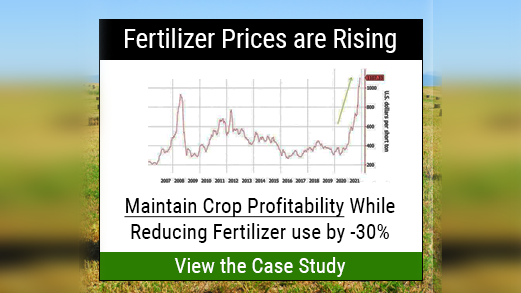The Florida Citrus Industry (Once Again) Is in a Challenging Situation
Many folks in the Florida citrus industry are committed to optimism despite some daunting challenges. With disease pressure, hurricanes, and development thinning our crop over the past 15 years, growers have been riding a wave of shrinking production and getting a good price for their crop, even though per-capita consumption of OJ has been cut by two-thirds.
Well the consumption side of the equation has caught up with us in the wake of Hurricane Irma where Florida processors put millions of gallons of imported orange juice from Brazil and Mexico under contract, forecasting that Florida would not recover from Irma so quickly. So, now we’ve got a massive OJ inventory situation on our hands.
Perfect Storm
Compounding the issue is Florida is expected to produce an even larger crop this year and there is nowhere to put the fruit. The increase, coupled with declining consumer consumption and the aforementioned increase in foreign imports, has resulted in a perfect storm.
Many grower contracts with processors are not being extended. This has created a wave of uncertainty throughout the industry. It is expected that 12 million boxes may not be harvested this season. This is a dreadful situation for Florida’s signature crop. Grower returns could be way below what it costs to grow a crop. I’ve heard contracts are being offered at a nickel below the futures price – that is less than a dollar!
Growers, the Florida Department of Citrus, industry leaders, and the brands now must figure out how to move the juice through the pipeline and get supply to the point where both processors and growers are satisfied with the market situation. This is not an easy fix.
Can we afford to market our way out of this quandary? Should the brands cut prices to jumpstart movement? If we find a short-term fix, what are we going to do long term? These are the extremely difficult questions facing the industry as we head into the 2019-2020 season.
As a temporary quick hit, Florida Citrus Mutual is seeking Congressional support for an additional OJ purchase of $43 million. This additional purchase would move approximately 18 million-pound solids of inventory or roughly 3 million boxes of fruit, which amounts to 4% of the state’s orange crop. This is a good start to a huge problem.
Learning to Grow with HLB
The silver lining in this consumption mess is that growers are learning to grow a crop in the era of HLB and our decade-long research push is starting to pay dividends. The USDA and UF/IFAS have both released new cultivars that are showing promise of tolerance and/or resistance to HLB. New and improved irrigation and nutrition management practices are ready to improve citrus tree and root health, fruit production, quality, and flavor of fruit from HLB-infected trees.
We now have a deep understanding of transmission of the HLB bacteria by the Asian citrus psyllid (ACP). Researchers have worked with growers to develop successful ACP management programs, using tools such as reflective mulch, protective tree covers, and kaolin clay.
Scientists are close to developing the citrus tristeza virus into a tool to control HLB. Plus, recent understanding of the below-ground pathology to improve root health will lead to better control of soilborne root pathogens and pests that attack citrus with HLB. For example, we have proven that optimizing soil pH allows more efficient delivery of micro and macro nutrients.
I’ve said it hundreds, if not thousands of times – this is a resilient industry and we face challenges head on, and more often than not, come out on top. Through leadership, intelligence, and action, we will solve the current issues. It will not be easy, but we’ve done it before, and we will do it again.
Florida Citrus Mutual Priorities in 2020
In this chaotic environment, Florida Citrus Mutual continues to work hard on behalf of members and the entire industry. We have a full slate of federal initiatives designed to support the Florida citrus grower in the coming year.
- Instituting a snapback provision that would put tariffs back on imported FCOJ from Mexico
- Allowing H-2A drivers to haul harvested commodities to a processor or packinghouse
- Capturing a portion of the revenue collected on the Brazilian OJ tariff to fund marketing programs
- Supporting Farm Workforce Modernization Act, which represents a serious attempt at bringing reforms to the current H-2A guestworker program. Improving the calculation, survey, and methodology for guestworker wages remains a priority.
- Securing nearly $30 million in Citrus Health Response Program and the HLB Multi-Agency Coordination Program dollars
- Crop Insurance reform
- Wind down and reallocation of block grant, Hurricane Irma funds










